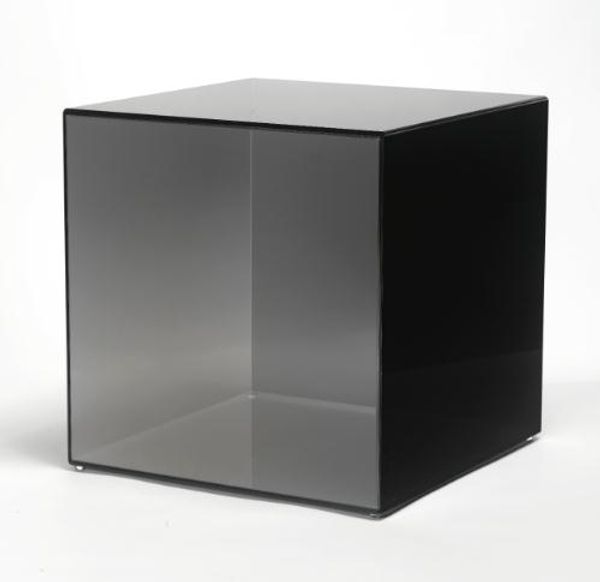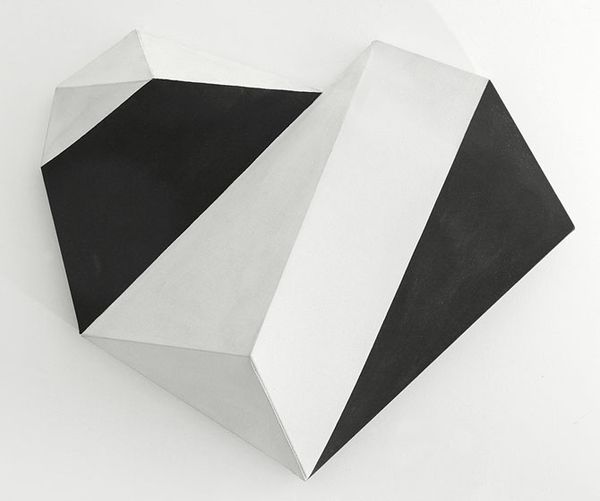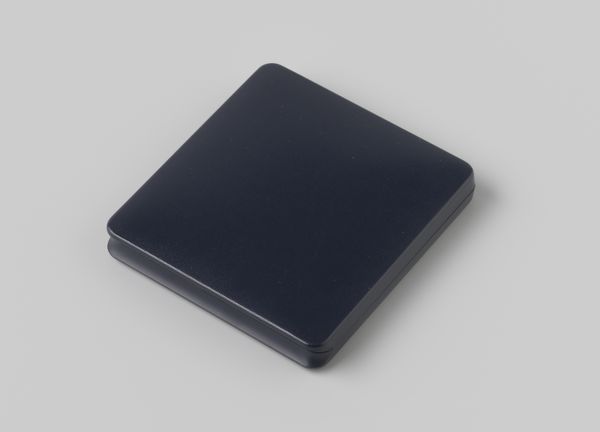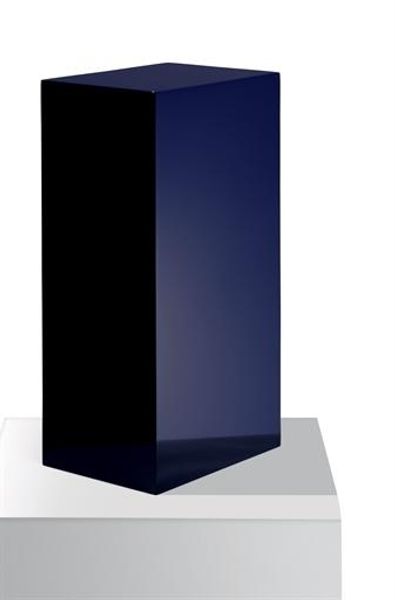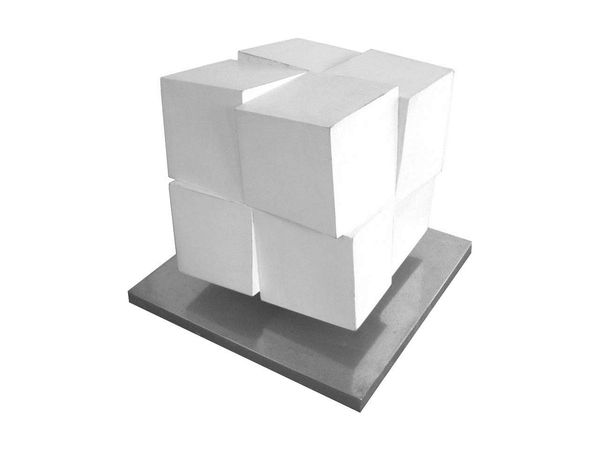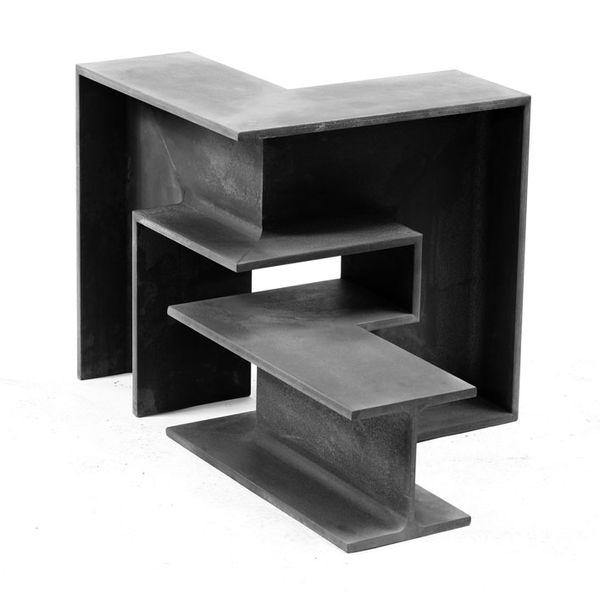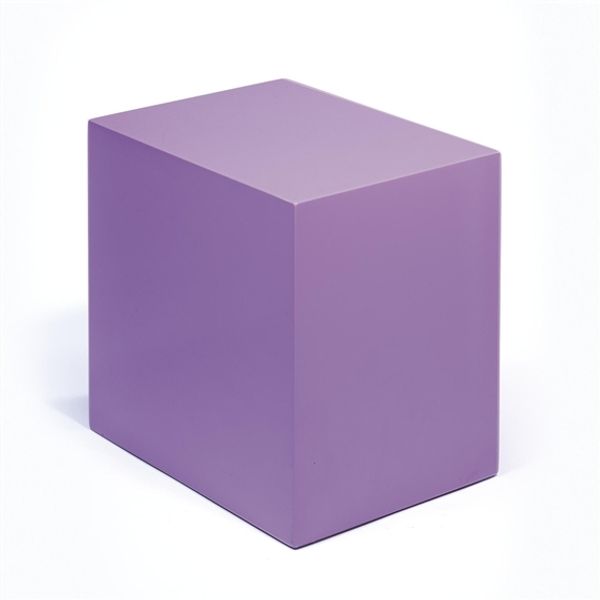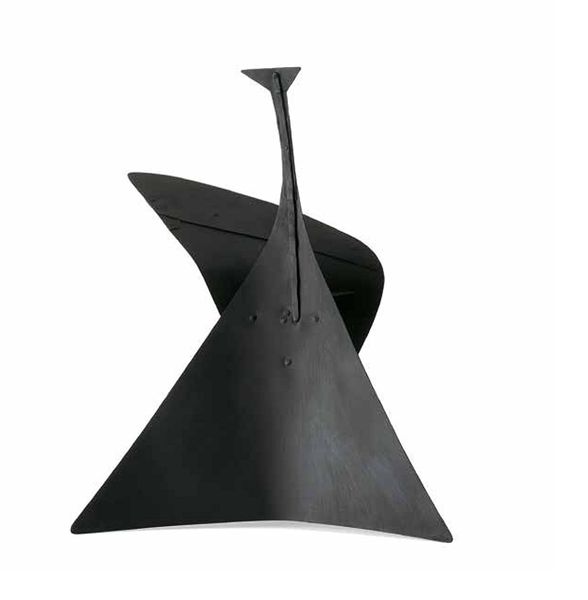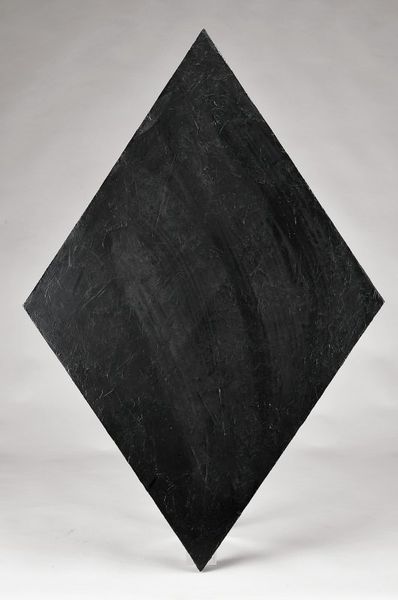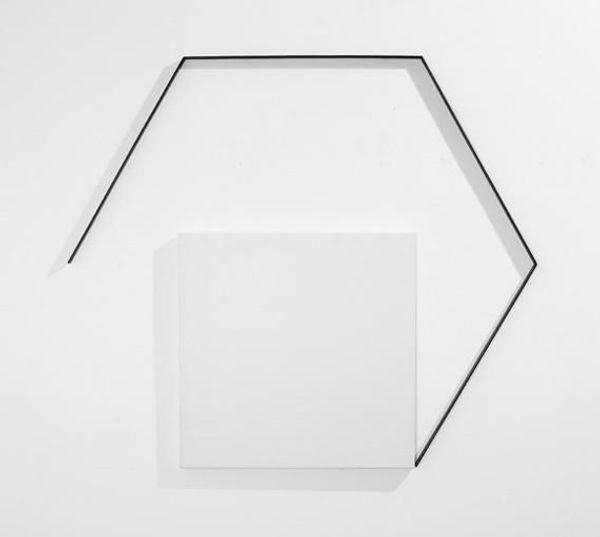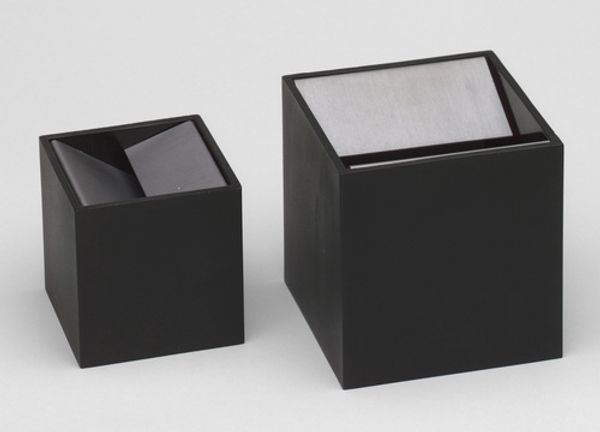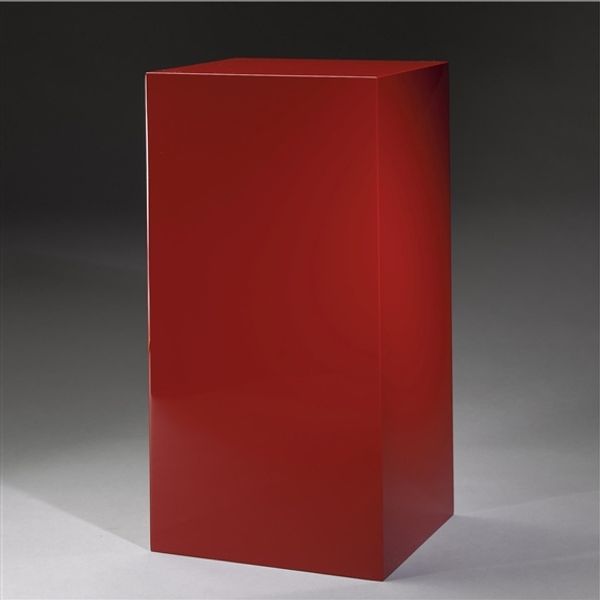
sculpture
#
3d model
#
3d printed part
#
minimalism
#
plastic material rendering
#
virtual 3d design
#
product design photgrpaphy
#
3d shape
#
geometric
#
sculpture
#
3d digital graphic
#
metallic object render
#
abstraction
#
3d modeling
#
modernism
#
hard-edge-painting
#
product render
Copyright: John McCracken,Fair Use
Curator: This is "Parsec" by John McCracken, a sculpture from 1988. Editor: It’s remarkably…imposing. Solid black, sharp angles. It has an ominous presence almost like a dark monolith. Curator: McCracken's work aligns with the Minimalist movement, specifically the West Coast "finish fetish" sub-movement, characterized by sleek surfaces and industrial materials. It emphasizes objecthood and materiality, rebelling against Abstract Expressionism's emphasis on the artist's gesture. Editor: The hard edges and stark abstraction certainly evoke a sense of industrial precision. Looking at this glossy black form, I consider how it reflects its surroundings, bringing them into the artwork, forcing it to interact with the context. Is this an exercise of power dynamics within museum spaces? Curator: The interaction with its surrounding architecture is essential. McCracken deliberately sought to create objects that blurred the line between painting and sculpture, challenging established categories and art-historical narratives. Editor: I think Minimalism can be seen as critiquing consumption. The polished surface and simplified shape encourage contemplation instead of immediate consumption, prompting an awareness of space. It’s kind of eco-conscious in its essence, almost ahead of its time, despite that 80s feel. Curator: Perhaps. There's also a subtle commentary on seriality and mass production, given the piece's manufactured appearance, and the potential for repetition. In that way, it is like an archetype of modernism itself. Editor: Looking at "Parsec" brings me back to those art theory seminars discussing institutional critique. The object sits, pristine and powerful, demanding that we think critically about how we assign value and meaning. Curator: And perhaps it highlights our persistent human need to locate and establish boundaries, and to create spaces that, in effect, contain us. Editor: Indeed, McCracken's sculpture invites these broader dialogues on structure and form. A piece like this encourages reflection not just on its visual impact, but on its interaction within and impact on cultural spaces.
Comments
No comments
Be the first to comment and join the conversation on the ultimate creative platform.
